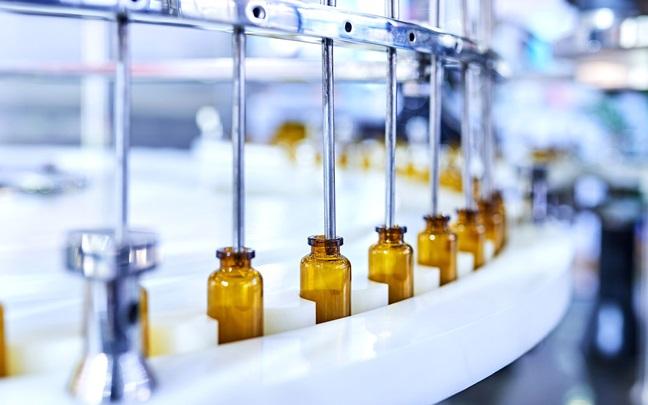Increasing regulatory scrutiny, pressured margins, complex supply chains and changing technology have led to an increase in the occurrence and severity of product recalls.
Some product defect risk can be mitigated using technology, but errors can affect even the most prestigious, global product manufacturers and brands.
Crisis planning and high-standard quality controls are key to mitigating the risk of product recall.
Insurance cannot replace effective business governance, but contaminated products insurance can support and complement an effective risk management strategy by minimising the financial repercussions of a product crisis and enabling brand recovery.
How contaminated products insurance can help you
Contaminated products insurance can help a company to protect:
Shareholder value
Product recalls can have a significant effect on a company’s balance sheet, causing a cash shortage that can eliminate profit.
We’ll work with you to make sure that product recall protection is embedded in your wider risk management strategy so that you meet your fiduciary duty to protect shareholder value.
Brand and reputation
When risk management systems and controls fail, what matters is how you respond and manage the event.
We’ll help you ensure your investment in risk transfer includes any crisis support you may need to respond to crises, protect and rehabilitate your brand.
Costs expenditure
Whether incurred by your company or a third party such as a direct customer. The costs to cover labour, transportation and disposal due to a product recall can be expensive. A product recall policy would typically cover these types of costs.
What can be covered?
Covers government-mandated recall and/or government shutdown of a manufacturing or processing facility.
Perils can include accidental contamination, wilful but not malicious, and/or malicious product tamper, product extortion and adverse publicity.
Risks associated with errors in the design, manufacture, production or processing of packaging material.
Key coverage comparison
This is a generalised comparison that demonstrates the key differences between a stand-alone, comprehensive product recall/contaminated product solution and the product recall expenses extension commonly applied to general liability coverage. The purpose of this is to highlight where discussion of the differences regarding cover will help understanding of our offering.
There are many derivatives of both the wordings compared; it would not be possible to include every eventuality. For this reason, while we have made every effort to ensure this is a fair comparison there may be examples where the assessment below is not accurate in some areas.
This is a guide only and advice should be sought from a suitably qualified insurance professional before making any coverage decisions based on this comparison.
Recall expenses
| Coverage | Contaminated products insurance | Extended product liability |
|---|---|---|
| Recall costs | ✔ | ✔ * |
| Physical/chemical analysis of product to establish cover | ✔ | ✖ |
| Inspection costs | ✔ | ✖ |
| Destruction costs | ✔ | ✖ |
| Product replacement costs | ✔ | ✖ |
| Slotting and re-slotting fees | ✔ | ✖ |
| Customer loss of profit | ✔ | ✖ |
Rehabilitation of brand
| Coverage | Contaminated products insurance | Extended product liability |
|---|---|---|
| Public relations assistance | ✔ | ✖ |
| Promotional offers | ✔ | ✖ |
| Sales and marketing expenses | ✔ | ✖ |
| Point of sales notices | ✔ | ✖ |
| Advertising costs | ✔ | ✖ |
Business interruption
| Coverage | Contaminated products insurance | Extended product liability |
|---|---|---|
| 12 Months loss of gross profit | ✔ | ✖ |
| Overheads including wages/salaries and depreciation of plant and machinery | ✔ | ✖ |
| Clean down and repair of machinery or plant | ✔ | ✖ |
| Subcontracting of manufacturing | ✔ | ✖ |
| All affected products included | ✔ | ✖ |
Consultancy advice
| Coverage | Contaminated products insurance | Extended product liability |
|---|---|---|
| Crisis consultancy with no deductible | ✔ | ✖ |
Third party liability
| Coverage | Contaminated products insurance | Extended product liability |
|---|---|---|
| Resulting from product liability litigation | ✖ | ✔ |
Triggers
| Coverage | Contaminated products insurance | Extended product liability |
|---|---|---|
| Cover for product that 'would' cause bodily injury or damage | ✔ | ✖ |
| Recall ordered by government authority | ✔ | ✖ |
| Cover for alleged safety issues (adverse/negative media) | ✔ | ✖ |
* Not given as standard and likely to be sublimited
Case study
All names, characters, and incidents portrayed in this case study are fictitious. No identification with actual persons (living or deceased), places, buildings, companies, entities or products is intended or should be inferred.
An international pharmaceutical manufacturer with annual sales of $90 million, discovered contamination of an active ingredient in one of their best-selling products, a specialist cancer drug.
They issued notification to the relevant authorities and were ultimately forced to recall and destroy several lots of the product.
The direct costs suffered by the producer were $10 million and included; contractual penalties from retailers, PR and communication costs, the cost of recall, refund and destruction.
They also lost over $20 million in gross profit after six months of production was destroyed due to the contamination.
This resulted in the manufacturer having to use a significant portion of its reserve capital to survive, causing it’s share value and dividend payments to fall significantly.
Pharmaceutical contaminated products insurance ensures manufacturers balance sheet is protected from events like these. Third party expenses such as customer loss of profit and contractual penalties can be covered, whilst the direct expenses an insured may suffer are also indemnified.
Critically, contaminated products insurance can provide business interruption and brand rehabilitation costs, which allows an insured to respond to a crisis in the most appropriate way to regain their market share quickly and minimising the effect of a contamination event.
It is a regulatory requirement for us to consider our local licensing requirements prior to establishing any contractual agreement with our clients










